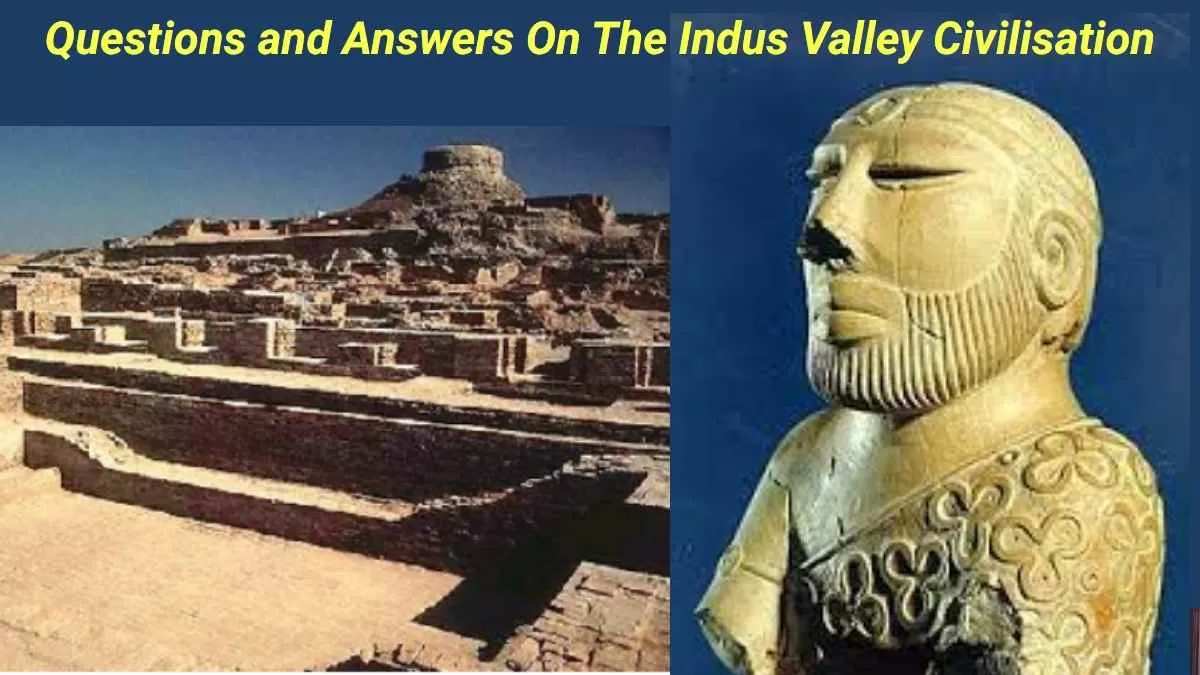The Indus Valley Civilisation (IVC), also known as the Harappan Civilisation, was one of the earliest civilisations in the world. Its earliest urban culture flourished around 3500-1900 BCE in the northwestern regions of the Indian subcontinent. It was spread across modern-day India and Pakistan, which is notable for its planned cities, advanced drainage system and undeciphered scripts. Major cities like Harappa, Mohenjo-Daro, Dholavira and Lothal-like sites reveal a sophisticated knowledge of architecture, water management and trades. This civilisation declined, but its legacy deeply influenced later Indian culture.
In this article, we will cover the top general knowledge questions with answers on the Indus Valley Civilisation, which would be helpful for your various competitive exams.
Here are the top GK Questions and Answers on the Indus Valley Civilisation
1. Which was the first Indus Valley site to be discovered?
- Mohenjo-daro
- Harappa
- Dholavira
- Lothal
Answer: b) Harappa
Explanation: Harappa, which was discovered in 1921 by Daya Ram Sahni, was the first Indus Valley site to be discovered. Hence the name “Harappa Civilisation”.
Also Read: Top GK Questions and Answers on the Mauryan Empire
2. The Great Bath was found at which Indus Valley Civilisation site?
- Mohenjo-daro
- Harappa
- Lothal
- Kalibangan
Answer: a) Mohenjo-daro
Explanation: The Great Bath, a large water tank with a sophisticated drainage system, was discovered in Mohenjo-daro and likely used for ritual bathing.
3. Which material was most commonly used in Harappan construction?
- Stone
- Mud bricks
- Burnt bricks
- Wood
Answer: C) Burnt bricks
Explanation: Harappan cities were mainly constructed with uniform, kiln-fired burnt bricks that provided durability and uniformity.
Also Read: Top GK Questions and Answers on The Gupta Empire
4. The Indus Valley Civilisation was a part of which age?
- Neolithic
- Chalcolithic
- Bronze Age
- Iron Age
Answer: c) Bronze Age
Explanation: IVC used bronze tools and artefacts, making it a Bronze Age civilisation.
5. Which of the following animals is NOT found in Harappan seals?
- Elephant
- Bull
- Horse
- Unicorn
Answer: c) Horse
Explanation: Horses are rarely, if ever, depicted, leading to debate about their presence in the IVC.
6. The famous "Dancing Girl" statue is made of:
- Bronze
- Terracotta
- Stone
- Copper
Answer: a) Bronze
Explanation: This small yet expressive statue reflects the metal casting skills of the Harappans.
7. Which of the following was NOT used by the Harappans?
- Copper tools
- Iron weapons
- Pottery
- Seals
Answer: b) Iron weapons
Explanation: Iron was not used in the IVC; it came much later during the Iron Age.
8. Which site has evidence of a ploughed field?
- Mohenjo-daro
- Harappa
- Kalibangan
- Lothal
Answer: c) Kalibangan
Explanation: Kalibangan (in Rajasthan) shows the earliest evidence of ploughed agricultural fields.
Also Read: Top GK Questions and Answers on History of India
9. Which foreign civilisation had trade links with the Harappans?
- Chinese
- Greek
- Mesopotamian
- Egyptian
Answer: c) Mesopotamian
Explanation: Mesopotamian texts mention trade with a region called "Meluhha", believed to be the Indus region.
10. Which feature of the Indus Valley cities suggests advanced urban planning?
- Temples and palaces
- Citadels
- Grid-pattern streets and drainage
- Markets
Answer: c) Grid-pattern streets and drainage
Explanation: Harappan cities were laid out in a grid with covered drainage systems, showing exceptional urban planning.
